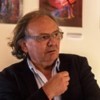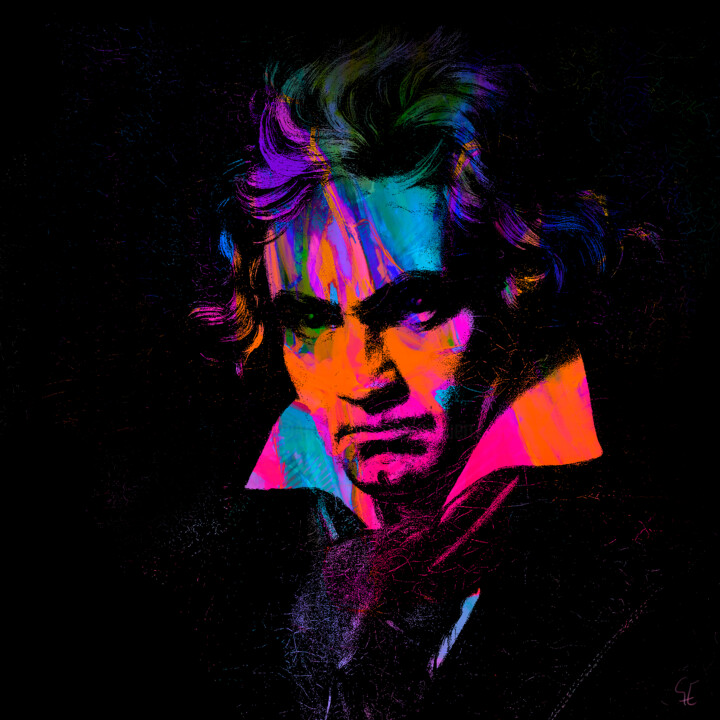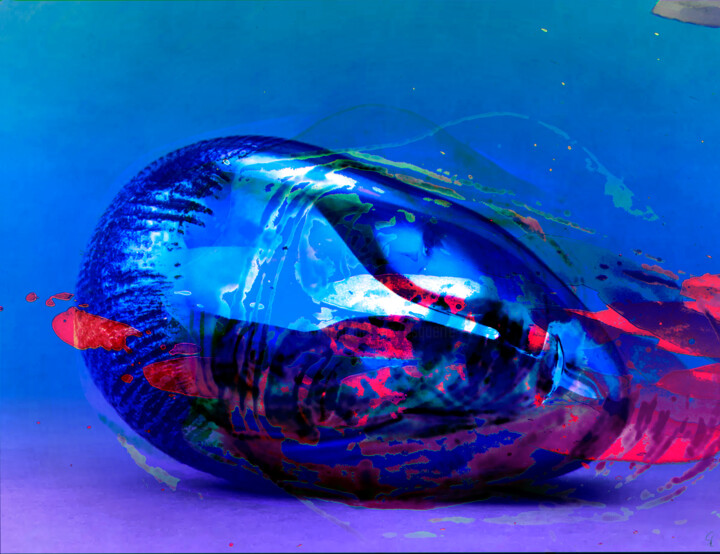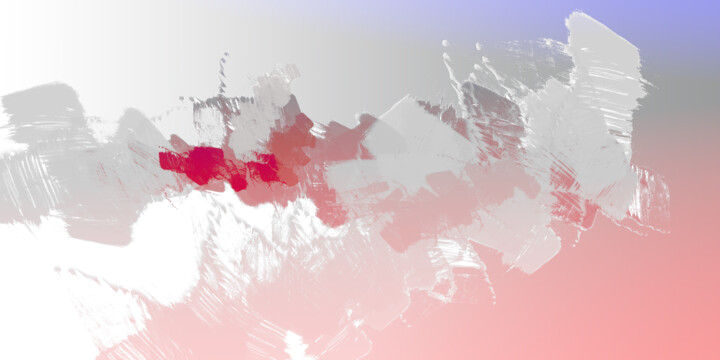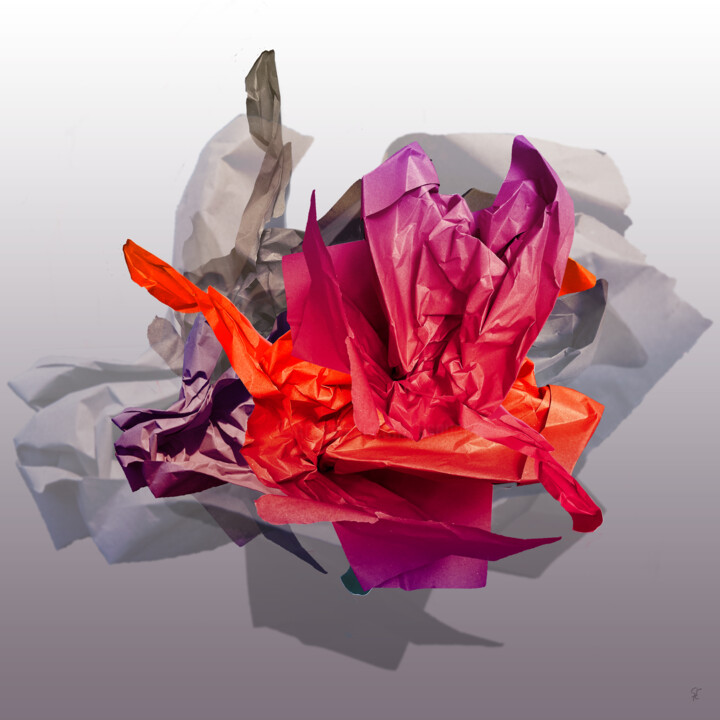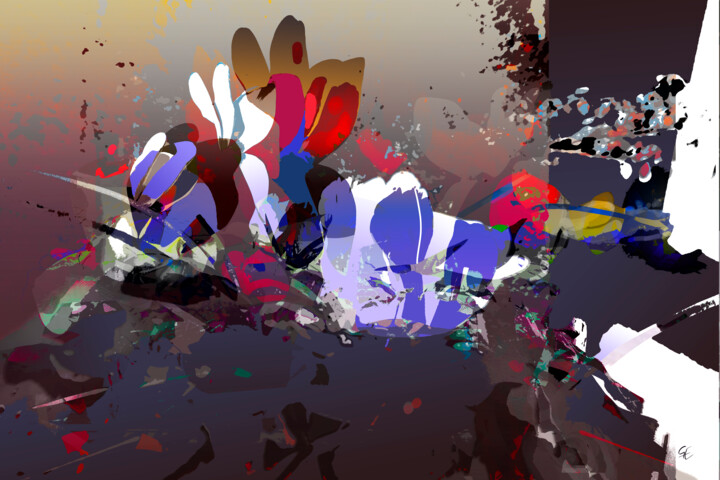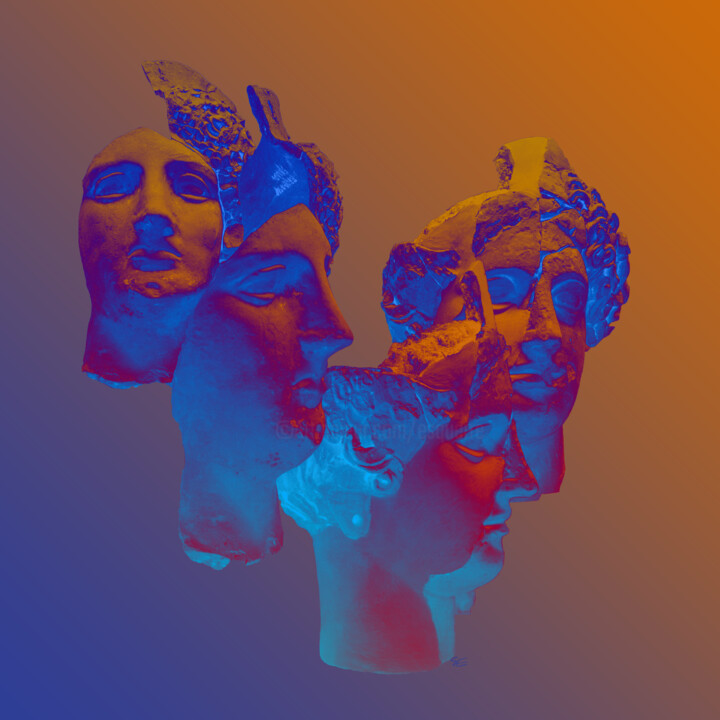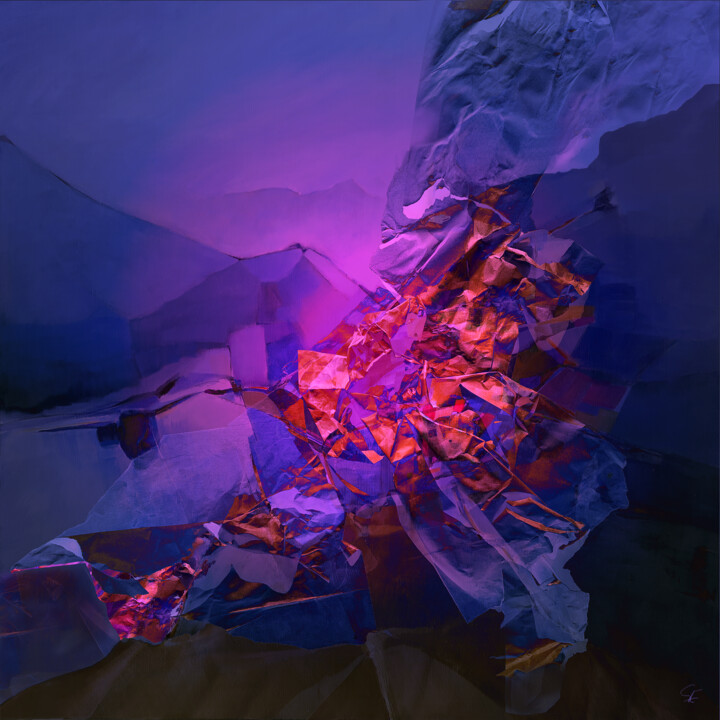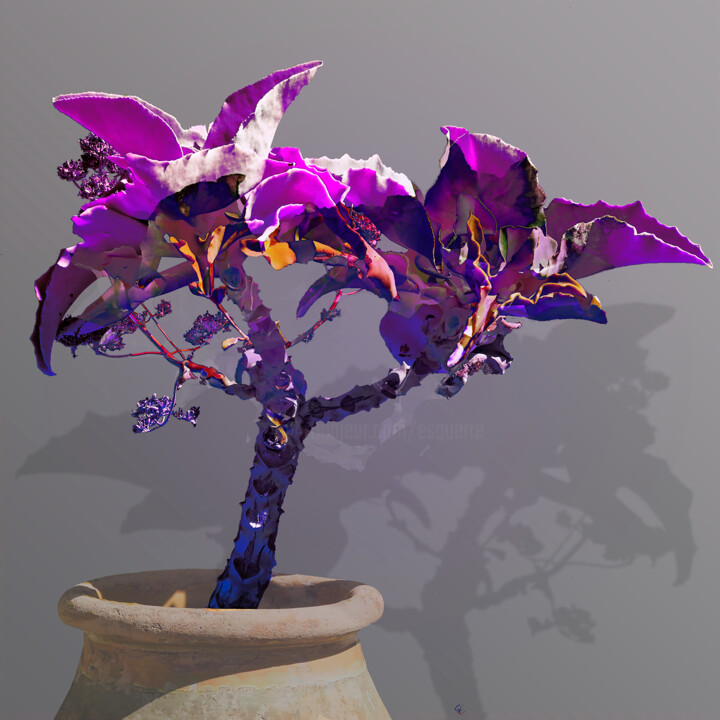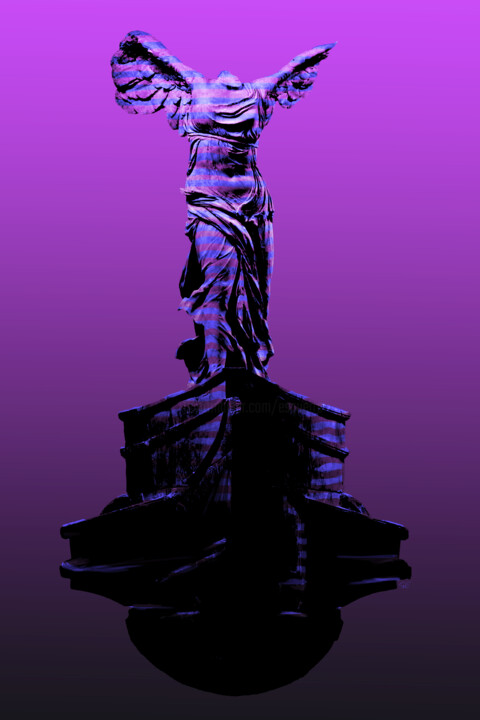What prompted you to become an artist? What is your background ?
A drawing of my father, discovered by chance when I was a young child, marked me so much that I wanted to draw too (it was an airplane made in a realistic way in pencil, when he was a teenager). Seeing my interest, my parents offered me my first box of oil paints at 12 and I painted my first canvas at 13. Wishing very early to be a teacher, I studied plastic arts. These studies concerned all fields: pure drawing, anatomy, perspective, painting, sculpture, without forgetting the history of art. Having become a teacher and always curious about all the techniques of image creation, I then studied what was called "audiovisual" (photo, sound, video, cinema). In 1982 I was appointed Artistic Advisor to the Ministry of Culture for the Haute-Normandie region. At the same time, I always continued to create with all the techniques that I knew and soon computer science.
What are the 3 things that differentiate you from other artists?
I studied Plastic and Visual Arts, History of Art. From the beginning of computer popularization, I thought that digital could bring a lot to Art and I trained in digital creation. I don't want to limit myself to a particular plastic expression technique: painting, sculpture, drawing, photography or computer science. I want to have the choice to express myself by choosing the appropriate technique for my current project.
Where does your inspiration come from?
My main sources of inspiration come from an almost permanent state of perception. I live with all the senses awake. I record everything without even thinking about it. Then a sort of personality filter makes certain things stand out and others don't. From there my path which could appear to be guided by chance is in fact guided by a constant work of reflection.
Tell us about the conception of your works, do you have a long preparatory work or is it quite spontaneous?
Ideas take shape with work. The most difficult thing is to determine what an idea will become: its size, its shape, its material, its colors in general. It is a first draft which will evolve towards the finished work. I would add that I feel an intense need to create "something", every day.
What do you want to show through your work?
It is not a question, for me, of showing something but rather of sharing the sum of sensations, thoughts and emotions that I put into the creation of the work. If the viewer perceives even a small part of it, I will be very happy. I would also like him to perceive the enthusiasm that animated me in the creation.
In your work do you use techniques or materials that are out of the ordinary?
In my creative journey I use digital photography a lot. It allows me to photograph a stage of the work in progress. I can then modify the photo of this stage at will on my computer, thanks to a graphics tablet. Then I return to modify the work according to this evolution. Often I repeat this type of operation until I feel that the work is finished. For sculpture, I like to work with pieces of car bodywork that I cut out and weld with a torch. I then paint them like canvases which would thus have three dimensions.
Do you have a favorite format? Why ?
I like the square format because it is a strong symbol of balance. But I never forget that most of the images created by man are inscribed in mostly horizontal rectangles.
What difficulties do you encounter in your work?
My biggest difficulty is time. I don't have enough time to do everything my imagination tells me all the time. My other difficulty is to share what I create: I want to show my works to as many people as possible. Finding places to exhibit in satisfactory conditions is very difficult.
How do you work? At home, in a shared workshop, in your own workshop?
I have three places of work in my house: a workshop for drawing and painting, an office for everything related to computers and photography, and an outdoor workshop for sculpture and the use of the oxyacetylene torch. .
Does the work of an artist lead you to travel a lot?
I travel mostly and a lot in my head, but I would like to make my camera travel more, which serves as my sketchbook.
What was the best moment of your career?
With each new work I tell myself that it's the best moment of my career!
How do you see your work in ten years?
I already don't see my next job... Above all, I don't want to plan and prefer to let myself be surprised by chance and spontaneity.
What are you currently working on? Are you planning an exhibition soon?
Seeing Christo's Wrapped Arc de Triomphe overwhelmed me and made me want to paint again a series on the theme of oblivion, lack, absence, frustration, which I had started A few years ago. I would then like to dedicate an exhibition to this theme.
If you could have created a masterpiece of art history, which one would you choose? Why ?
Les demoiselles d'Avignon by Picasso in 1907, because this work is a turning point in modern art, both in terms of its aesthetics and its subject (for the time). It breaks with everything that was done before and announces everything that will be done thereafter.
If you could invite a famous artist for dinner (dead or alive), which one would you choose? Why ?
I would invite Picasso with immense respect. I would try to continue to discover how he was able to remain a child until he was 92 and I would extend with him Henri-Georges Clouzot's wonderful film "The Picasso Mystery" from 1955.

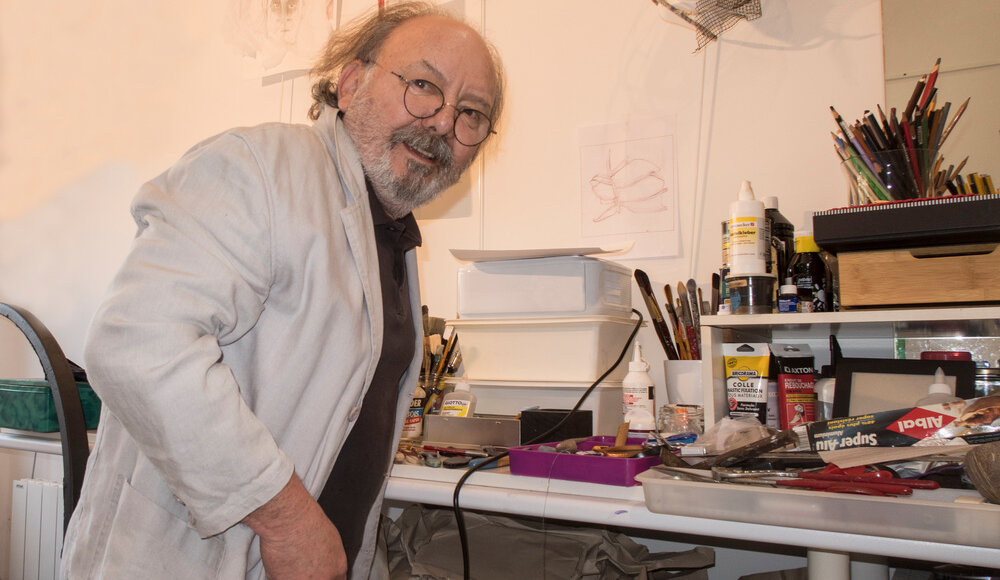


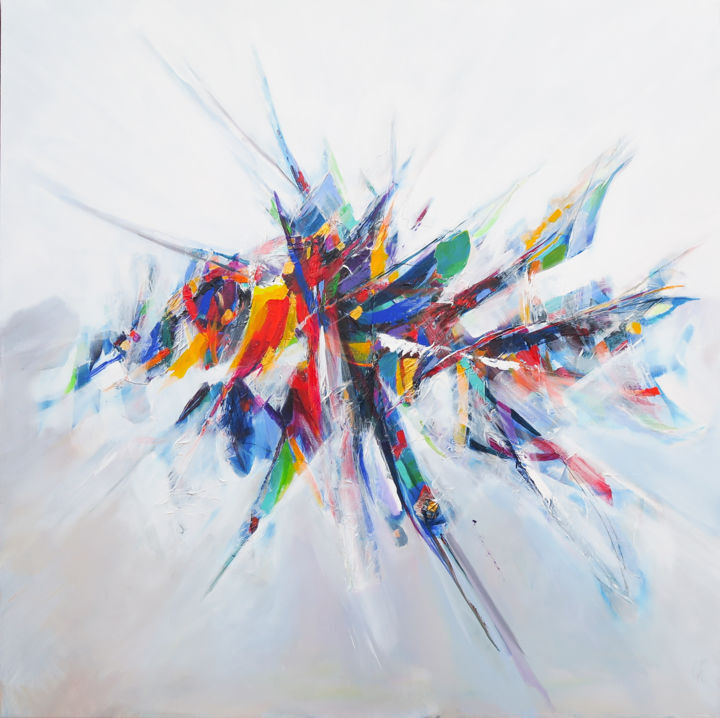


 Olimpia Gaia Martinelli
Olimpia Gaia Martinelli
